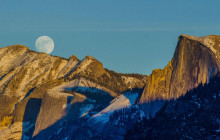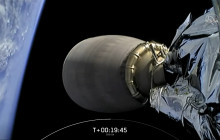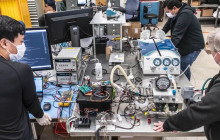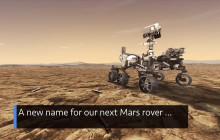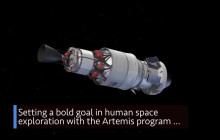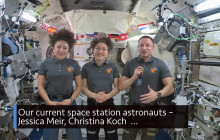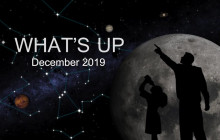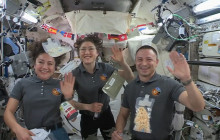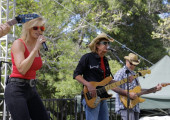Transcript:
What’s Up for September. A total eclipse of the harvest moon! Hello and welcome! I’m Jane Houston Jones from NASA’s Jet Propulsion Laboratory in Pasadena, California. On the evening of September 27th, observers in North and South America will see a long total lunar eclipse–lasting 72 minutes. This eclipse is also visible in Europe and Africa.
It’s the night of the harvest moon–the full moon closest to the September equinox. “Equinox” is derived from the Latin for “equal night.” So day and night on the 27th will be roughly of equal length, and the sun will rise exactly in the east and set exactly in the west.
Sometimes a full moon is called a “supermoon”–a term coined just a few years ago. A supermoon is a new or full moon which occurs when the moon is at or near its closest approach to Earth in a given orbit. There are 4 to 6 supermoons every year on average, so they’re not unusual. You won’t really be able to see the difference between this full moon and any other one with your eyes. It’ll only be about 7% larger. The moon is 221,000 miles from Earth this month, as opposed to the average distance of 239,000 miles.
The partial lunar eclipse begins at 9:07 p.m. Eastern Daylight Time. It will last a little more than an hour, and observers can watch as, crater by crater, the moon is engulfed in Earth’s shadow. West Coast viewers take note: when the eclipse begins, the moon won’t have risen yet for you. The total eclipse begins at 10:11 p.m. Eastern Daylight Time and also lasts for more than an hour, ending at 11:23 p.m. The moon’s reddish color you’ll see is caused by sunlight refracting through Earth’s atmosphere on its way to light the moon’s surface. This month the moon skims Earth’s shadow, just as it did in the April lunar eclipse. In April the north pole appeared a bit brighter during totality. This time, the southern pole will appear a bit brighter, a bit like a partial eclipse. Then it’s the whole show in reverse order, ending at 12:27 a.m. on the East Coast and 9:27 p.m. on the West Coast.
When you’re not eclipse watching, catch Mercury, Saturn, Neptune and Pluto in the evening sky, Uranus and Neptune at midnight, and Venus, Mars and Jupiter in the predawn sky. Finally, you can still get a great view of our Milky Way spanning the sky from southwest to northeast–if you can escape to a dark location.
You can learn about all of NASA’s missions at www.nasa.gov
That’s all for this month. I’m Jane Houston Jones.
